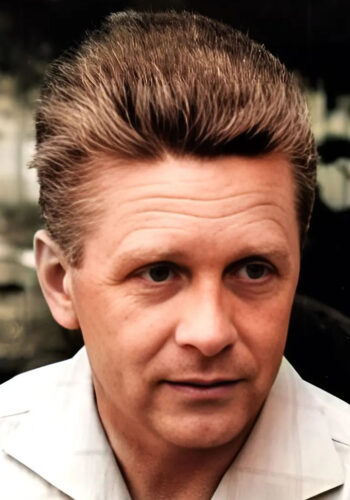Tabeau, Jerzy

Jerzy Tabeau (born Wesołowski, 18 Dec. 1918 – 11 May 2002) was a Polish medical student who joined the Polish underground army in 1939. He was arrested in March 1942 and sent to Auschwitz Main Camp, where he fell ill with pneumonia but was nursed back to health in the inmate infirmary. After that, he became a male nurse, in which role he contracted typhus. Although again seriously sick and unfit for labor, he again got nursed back to health.
He claimed to have escaped the camp in late November 1943, and around the turn of 1943/1944, he wrote a report on his alleged experiences at Auschwitz, which was published in August 1944 in Abraham Silberschein’s series The Extermination of the Jews in Poland. In November 1944, an English translation was included in the War Refugee Board Report, with the author wrongly given as an anonymous “Polish major.” The passages on extermination claims about Auschwitz contain the following peculiar claims about the so-called “bunkers” (although he didn’t use that term):
- Special gas chambers were built near the Birkenau Camp into which gas was supplied through valves opening and closing hermetically. However, the orthodoxy has it that these buildings already existed and were merely adapted with minor changes. Also, the gas was supposedly introduced through hatches in the wall, not through valves.
- The doomed inmates were driven to this building without escorts, because the facility was allegedly inside the camp. However, both “bunkers” are said to have been outside the camp, and an armed escort would have been very much needed.
- Everyone received a towel and soap when entering the gas chamber. This most certainly would never have happened, considering the mess it would have created and the effort necessary to retrieve and clean these items afterwards. In addition, no one takes towels into a shower.
- An SS man threw hydrogen-cyanide bombs through the valves into the chamber. No such thing as hydrogen-cyanide bombs existed. The orthodoxy has it that Zyklon-B pellets were poured through hatches.
- After only 10 minutes, the doors were opened, and a special unit carried away the bodies. Ten minutes, however, was not even enough time for everyone to die, let alone to air out the space. Since Zyklon B releases its poison for an hour or two, depending on the ambient temperature, and because this alleged facility presumably had no ventilation system, the poison content inside the room still would have been rising when the doors were allegedly opened, endangering and eventually killing anyone who dared enter the facility for heavy labor.
- Bodies placed in mass graves had to be exhumed in late 1942 and their remains burned. This much is true, as those corpses, buried into the groundwater, threatened to poison the region’s drinking water. However, these were the corpses of the raging typhus epidemic, not mass-murder victims, as Tabeau claimed.
- The subsequent open-air incineration of the decomposing bodies was allegedly done by simply drenching the piled-up bodies with gasoline. However, gasoline would have been useful only for igniting some solid fuel, such as wood or coke, but Tabeau does not mention this – implying that those corpses, once lit, underwent self-immolation. But that is a myth, because lots of solid fuel would have had to be put underneath those piles of bodies for them to be cremated on open-air incinerations.
Jerzy Tabeau was admitted to the Auschwitz Main Camp, where he spent his time at the inmate infirmary. He therefore had no first-hand knowledge of anything going on inside or outside the Birkenau Camp, nor did he claim he had. Whatever his sources of “information” were, they were very evidently extremely inaccurate even by orthodox standards – if he didn’t make up the whole story himself. His physically impossible claims about one of the alleged “bunkers” – facilities that never existed in reality – are mere reflections of an evolving pattern of atrocity propaganda developed and spread by the various Auschwitz resistance groups, to which Tabeau, as a former member of the Polish partisan army, probably had good contacts. (For more details, see Mattogno 2021, pp. 144-148).

You need to be a registered user, logged into your account, and your comment must comply with our Acceptable Use Policy, for your comment to get published. (Click here to log in or register.)